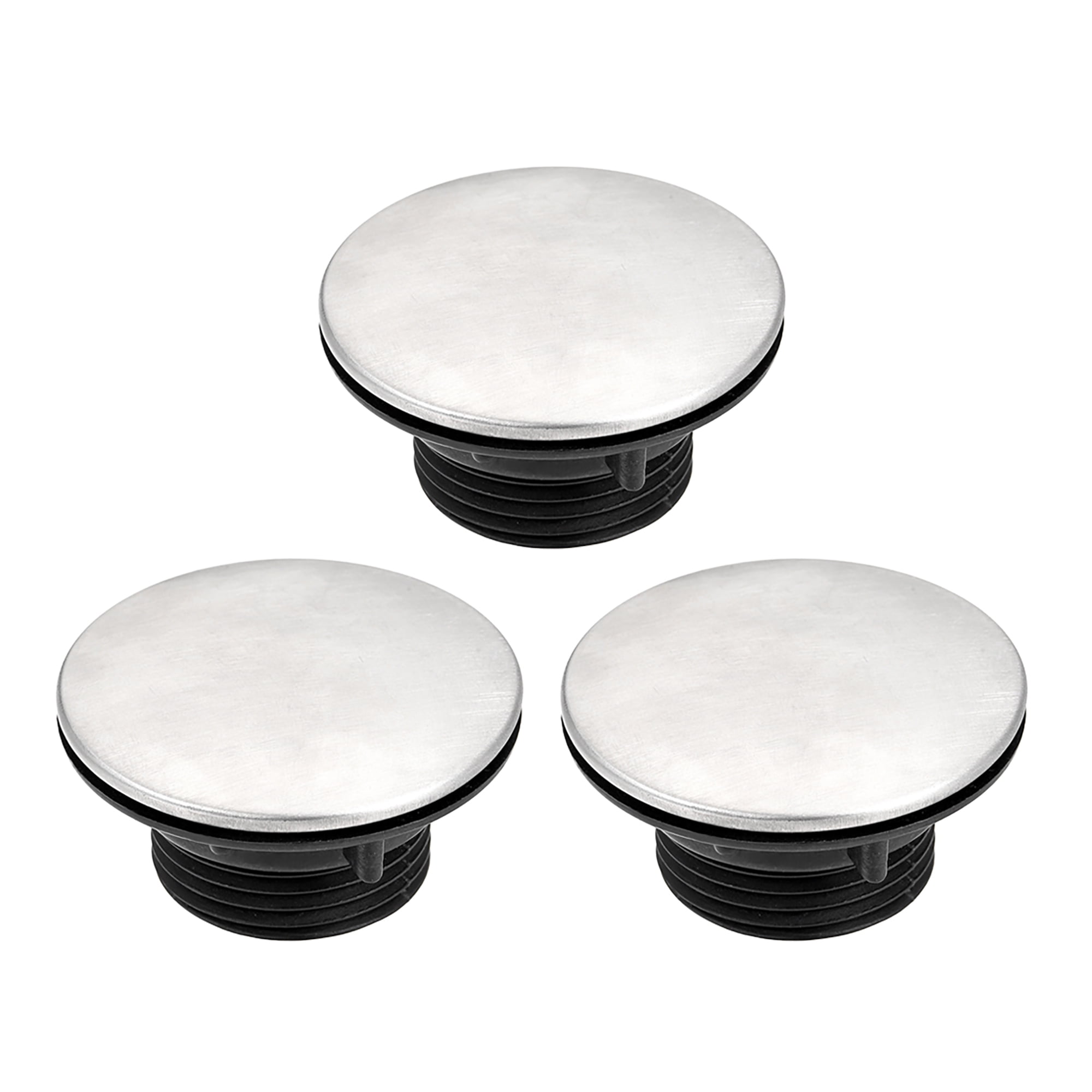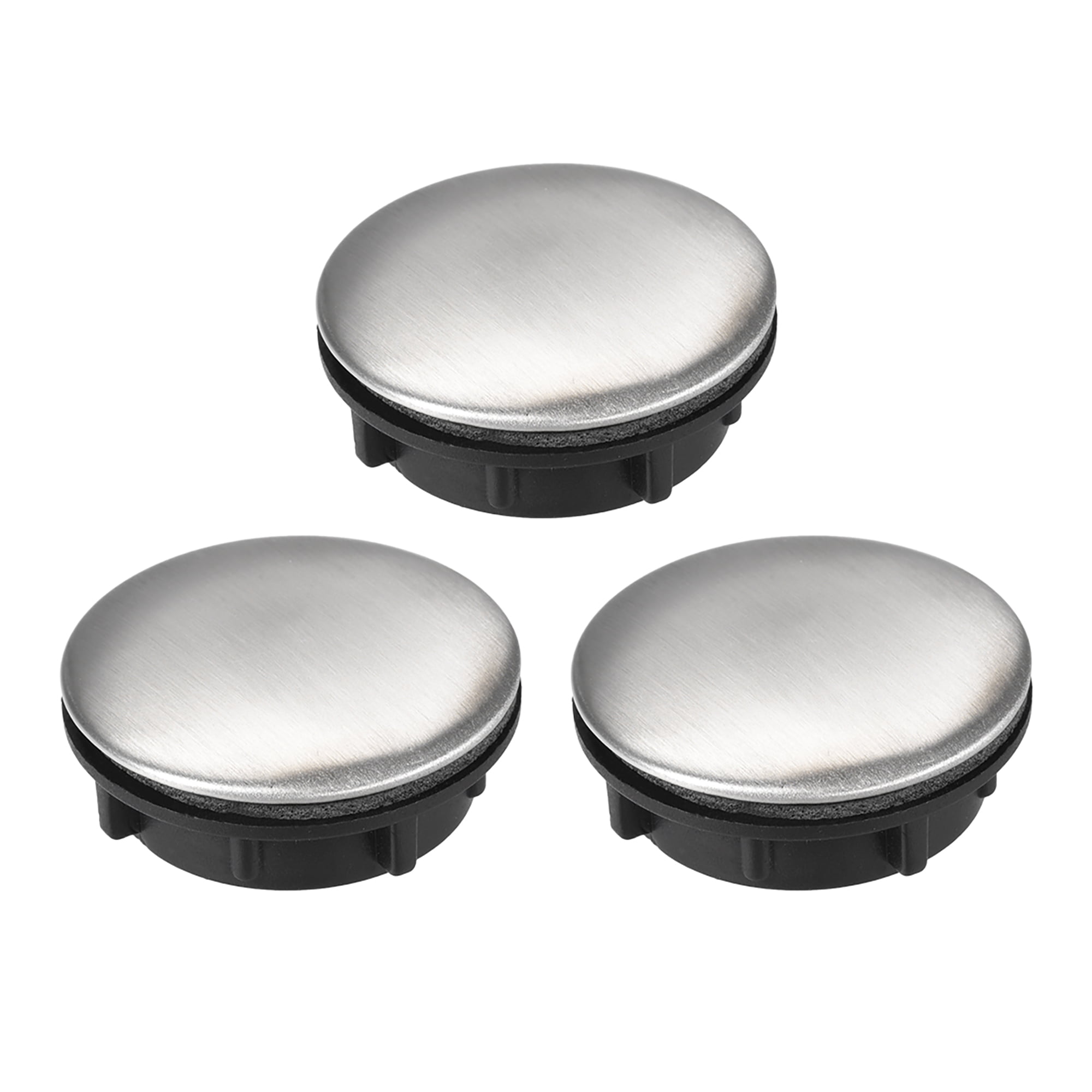Bathroom Faucet Hole Cover

A bathroom faucet hole cover serves a practical and aesthetic purpose, offering a solution for unused or outdated faucet holes in your bathroom sink. These covers seamlessly blend with the sink’s design, concealing the hole and creating a polished look. They come in various materials, sizes, and styles to match different bathroom aesthetics.
Types of Bathroom Faucet Hole Covers
Bathroom faucet hole covers are available in various materials, sizes, and designs to accommodate diverse bathroom styles and preferences.
- Material: Covers are commonly made from materials like stainless steel, brass, chrome, and plastic. Stainless steel and brass are durable and resistant to corrosion, while chrome offers a sleek, modern look. Plastic covers are often more budget-friendly and come in various colors.
- Size: Covers are available in various sizes to fit different faucet hole diameters. It’s essential to measure the hole before purchasing a cover to ensure a proper fit.
- Design: Bathroom faucet hole covers come in a variety of designs, from simple and minimalist to ornate and decorative. Some covers feature a smooth, flat surface, while others may have a textured or patterned design.
Situations Where a Bathroom Faucet Hole Cover is Essential
A bathroom faucet hole cover can be particularly useful in various scenarios.
- Replacing an Old Faucet: When upgrading to a new faucet with a different configuration, a hole cover can conceal the unused hole left by the old faucet. This creates a clean and polished look, blending the new faucet seamlessly with the sink.
- Remodeling or Renovating: During bathroom renovations, a hole cover can provide a temporary solution while you decide on the final faucet design. This prevents dust and debris from entering the unused hole, keeping the sink clean and protected.
- Upgrading a Sink: If you’re upgrading to a new sink with a different faucet configuration, a hole cover can conceal the unused holes from the previous sink. This creates a seamless and aesthetically pleasing look.
Aesthetic Impact of a Bathroom Faucet Hole Cover
A bathroom faucet hole cover can significantly impact the overall aesthetic of a bathroom.
- Improved Aesthetics: A hole cover can create a clean and polished look by concealing an unused faucet hole. This creates a more cohesive and visually appealing bathroom design.
- Enhanced Functionality: A hole cover can protect the unused hole from dust, debris, and water, contributing to a cleaner and more hygienic bathroom environment.
- Style and Design: Hole covers are available in a wide range of styles and finishes, allowing you to choose one that complements the existing bathroom decor. They can be used to create a modern, minimalist, or traditional look, depending on your preference.
Installation and Removal of Bathroom Faucet Hole Covers

Bathroom faucet hole covers are designed to conceal unsightly holes in your bathroom sink countertop, offering a clean and polished look. Installing and removing these covers is a simple process that can be completed with basic tools and a few minutes of your time.
Installing a Bathroom Faucet Hole Cover
Installing a bathroom faucet hole cover is a straightforward process that can be completed in a few steps. The process involves aligning the cover with the hole in your sink countertop and securing it in place.
- Gather the necessary tools and materials: You will need a bathroom faucet hole cover, a screwdriver (Phillips or flathead, depending on the cover’s screws), and a measuring tape (optional).
- Clean the area around the hole: Use a damp cloth to remove any dirt or debris from the area around the hole where you will be installing the cover.
- Align the cover with the hole: Place the cover over the hole in your sink countertop, ensuring it is centered and properly aligned.
- Secure the cover in place: If the cover uses screws, insert them into the designated holes and tighten them using a screwdriver. Some covers may use adhesive instead of screws, in which case you will need to follow the manufacturer’s instructions for applying the adhesive.
Removing a Bathroom Faucet Hole Cover
Removing a bathroom faucet hole cover is just as simple as installing it. This process involves reversing the installation steps and removing the cover from the sink countertop.
- Locate the screws or adhesive: If the cover is secured with screws, identify the screw heads. If the cover is attached with adhesive, locate the adhesive strip or points.
- Remove the screws or adhesive: If the cover is secured with screws, use a screwdriver to loosen and remove the screws. If the cover is attached with adhesive, carefully peel or pry the adhesive strip or points away from the countertop. Take care not to damage the countertop.
- Lift the cover off: Once the screws or adhesive are removed, gently lift the cover off the countertop. Be cautious to avoid scratching or damaging the sink countertop.
Comparing Installation Processes for Different Types of Covers
The installation process for different types of bathroom faucet hole covers may vary slightly.
- Screw-on covers: These covers are typically the easiest to install and remove, as they only require a screwdriver to secure and detach them. The screws may be Phillips or flathead, depending on the cover’s design.
- Adhesive covers: These covers are often self-adhesive and require no tools for installation. They are typically applied by pressing the cover firmly against the countertop, ensuring a secure bond. Removing adhesive covers may require some effort, as they are designed to remain securely attached. You may need to use a putty knife or a similar tool to gently pry the cover off the countertop.
- Snap-in covers: These covers are designed to snap into place and often have a secure fit that requires no tools for installation. Removal may involve a simple lifting motion or a specific release mechanism, depending on the cover’s design.
Bathroom Faucet Hole Covers

Maintaining a clean and functional bathroom is essential for a comfortable living environment. Bathroom faucet hole covers, while seemingly simple, play a crucial role in preserving the aesthetic appeal and functionality of your bathroom. Regular maintenance and proper care are essential for prolonging the lifespan of these covers and preventing potential issues.
Cleaning Methods for Different Materials
The cleaning methods for bathroom faucet hole covers vary depending on the material they are made of. Here’s a breakdown of recommended cleaning techniques for common materials:
- Stainless Steel: Stainless steel is a durable and easy-to-clean material. You can use a mild dish soap and a soft cloth to wipe down the surface. Avoid abrasive cleaners, as they can scratch the finish. For stubborn stains, a paste made of baking soda and water can be effective.
- Chrome: Chrome is another popular material for bathroom faucet hole covers. It can be cleaned using a non-abrasive cleaner specifically designed for chrome surfaces. Avoid harsh chemicals or cleaners that contain bleach, as they can damage the chrome finish.
- Brass: Brass is a classic material that requires a bit more care. You can clean brass covers with a mild soap solution and a soft cloth. To maintain the shine, you can use a brass polish specifically formulated for cleaning brass surfaces.
- Plastic: Plastic faucet hole covers are typically easy to clean. Use a mild soap and water solution with a soft cloth to wipe down the surface. Avoid harsh chemicals or abrasive cleaners, as they can damage the plastic.
Common Issues and Solutions
Although bathroom faucet hole covers are generally low-maintenance, some common issues can arise over time:
- Scratches: Scratches can occur from abrasive cleaning materials or accidental contact with sharp objects. To prevent scratches, use a soft cloth and non-abrasive cleaners. For existing scratches, you can try using a polishing compound specifically designed for the material of the cover.
- Discoloration: Discoloration can happen due to mineral deposits from hard water or exposure to harsh chemicals. To prevent discoloration, clean the covers regularly with a mild soap solution. For existing discoloration, you can try using a descaling agent specifically designed for the material of the cover.
- Loose Fit: If the cover becomes loose, it can be a result of wear and tear or improper installation. To tighten the cover, you can try using a screwdriver to adjust the screws that hold it in place. If the screws are stripped, you may need to replace them.
- Broken Cover: If the cover breaks, you will need to replace it. Choose a cover that is compatible with your faucet and the size of the hole. You can find a wide variety of replacement covers at home improvement stores or online.
Tips for Prolonging Lifespan
Here are some tips for extending the lifespan of your bathroom faucet hole covers:
- Clean Regularly: Regular cleaning helps prevent the buildup of dirt, grime, and mineral deposits. Aim to clean the covers at least once a week.
- Avoid Harsh Chemicals: Harsh chemicals can damage the finish of the cover and shorten its lifespan. Use mild soap and water solutions for cleaning.
- Use Soft Cloths: Avoid using abrasive materials or sponges that can scratch the surface of the cover.
- Inspect Regularly: Regularly inspect the covers for signs of wear and tear, such as scratches, discoloration, or loose fits. Address any issues promptly to prevent further damage.
Maintenance Schedule
A regular maintenance schedule can help keep your bathroom faucet hole covers in top condition:
- Weekly Cleaning: Clean the covers with a mild soap solution and a soft cloth.
- Monthly Inspection: Inspect the covers for signs of wear and tear, such as scratches, discoloration, or loose fits.
- Yearly Deep Clean: Perform a deep clean using a descaling agent specifically designed for the material of the cover.
Bathroom Faucet Hole Covers
Choosing the right bathroom faucet hole cover can significantly enhance the overall aesthetics and functionality of your bathroom. It’s not just about covering up a hole; it’s about creating a cohesive and stylish look that complements your bathroom fixtures.
Factors to Consider When Selecting a Bathroom Faucet Hole Cover
To ensure you choose the perfect bathroom faucet hole cover, consider these key factors:
- Size: Measure the diameter of the hole you need to cover accurately. Ensure the cover fits snugly without being too tight or loose.
- Material: Bathroom faucet hole covers are available in various materials, each with its own advantages and disadvantages.
- Metal: Durable, stylish, and available in various finishes (e.g., chrome, brushed nickel, brass).
- Plastic: Affordable, lightweight, and easy to clean.
- Ceramic: Elegant, often found in matching sets with bathroom fixtures.
- Style: Consider the overall design of your bathroom and choose a cover that complements the style of your faucets and other fixtures.
- Modern: Sleek, minimalist designs with clean lines.
- Traditional: Ornate details, decorative accents, and classic finishes.
- Contemporary: A blend of modern and traditional elements, often featuring geometric patterns or bold colors.
